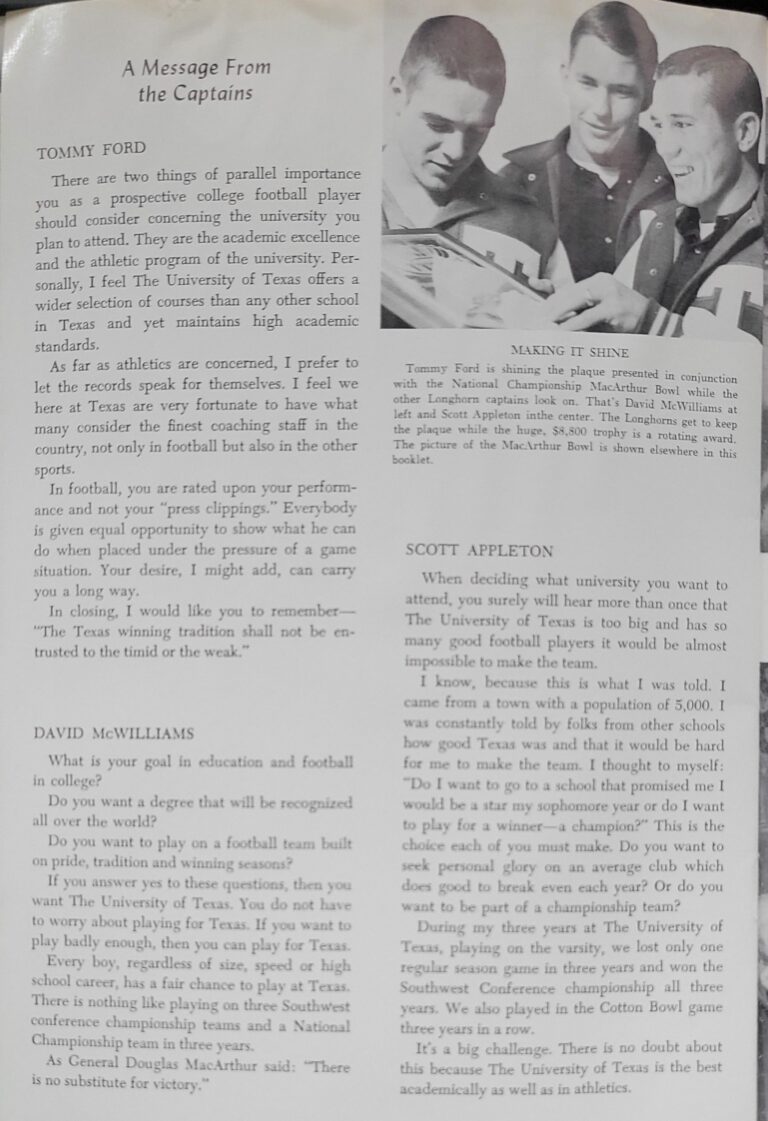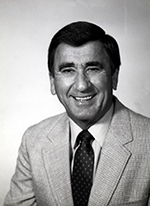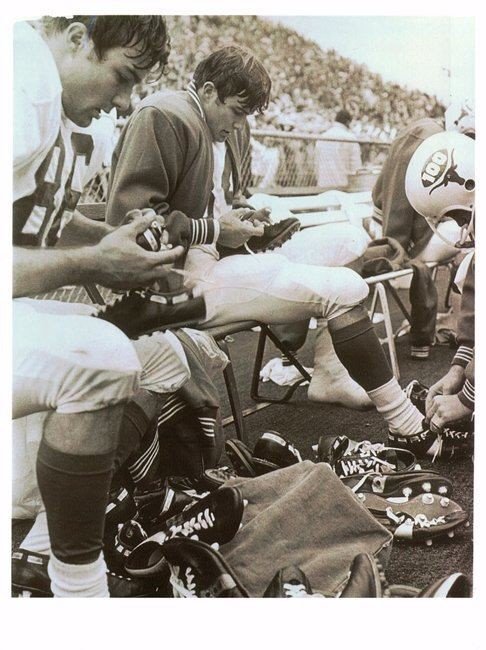When the Past intersects the future 1949 -2019
Intersecting the Past with the Present -Texas vs. Georgia. We have been here before … sort of – by Gaylon Krizak
Frend saying “Plus ca change, plus c’est la meme chose.”
Translated from French: The more things change, the more they stay the same.
For instance, take this storyline: Texas and its second-year head coach are picked for a major Jan. 1 bowl game, where the Longhorns – good, but far from great, most of the season – are matched with a Georgia team that, on the surface and in the eyes of most national analysts, appears vastly superior and enters the game as a clear favorite.
Sounds familiar? It should, since it describes the 2019 Sugar Bowl to a tee. But, exactly 70 years ago, it also accurately summed up the 1949 Orange Bowl.
The only thing missing in December 1948 was social media, although a glance at today’s Twitter or Facebook probably would have summed up the general mood surrounding the matchup between the Longhorns and Bulldogs (albeit with language considerably more genteel, given the era).
1949 Texas – Georgia program
Photo is not of the players on the 1949 Orange Bowl team, but is used as a reference for images of some of the players Gaylon refers to in the full article.
Georgia set the stage for the less-than-ideal pairing when coach Wally Butts made this demand of the Orange Bowl selection committee: his 9-1 Bulldogs, champions of the Southeastern Conference, would not take on another SEC team, despite hopes from the public that one of the league’s runners-up, Mississippi (8-1) and Tulane (9-1), would get the other bid. As part of the unruly 12-team SEC in which teams had played as few as five conference games and others as many as nine, neither the Rebels nor the Green Wave had played Georgia during the regular season; the Bulldogs went 6-0 on league play and were awarded the championship over Ole Miss (6-1) and Tulane (5-1).
In the end, according to the Nov. 29 Miami News, feelers went out to “four or five” schools with the top choices being Texas and Santa Clara, unranked and 7-2-1, having handed No. 4 Oklahoma its only loss. The Broncos reportedly were “waiting in the wings … ready and willing to accept” had the Longhorns turned down the invitation. There actually was a chance that would happen. Several players were married and did not want to accept the invitation. Athletic director D.X. Bible resolved the problem by offering to fly all the wives to the Orange Bowl and adding for all of them a side trip to Cuba to tour Havana.
Before rings were popular the Bowl committees gave charms.
Early Monday afternoon, Nov. 29, Texas officials phoned the Orange Bowl committee and formally accepted. Reaction was swift and sharp and overwhelmingly negative. Walter Stewart, sports editor of the Memphis Commercial-Appeal and outspoken Mississippi advocate, accused Butts of “looking for a soft spot on which to place the rear of his trousers.” Jimmy Burns, sports editor of the Miami Herald, was even more provocative, first quoting an unidentified Ole Miss official as saying that Butts was “taking an undefensible [sic] position” and that “unless (Butts) is afraid that Ole Miss would beat Georgia,” the official couldn’t understand Butts’ stipulation.
But Burns’ deepest dig came when he wrote: “It is disheartening … that we have to reach in the bottom of the barrel and take a third-rate eleven as an opponent for Georgia.”
Blair Cherry’s second Texas team (like Coach Herman) was the Longhorns’ first since 1943 without Bobby Layne at the helm, and its growing pains were evident fairly quickly: after a 33-0 rout of LSU to start the season, the Longhorns had to go on the road to face a veteran North Carolina team eager for revenge after a 34-0 loss in Austin the previous season. The Tar Heels hammered Texas 34-7, its worst loss in 10 years; two weeks later, the Longhorns fell to Oklahoma for the first time since 1939, 20-14. Wins over Arkansas and Rice to open Southwest Conference play were followed by a 21-6 home loss to SMU. Tight victories over Baylor and TCU appeared to right the ship somewhat, but that illusion vanished on Thanksgiving in a 14-14 tie with winless Texas A&M in Austin that felt for all the world like a loss; it ended an eight-game Texas winning streak in the series and was the Aggies’ first non-loss in Memorial Stadium.
At 6-3-1, the Longhorns figured their season was over. Thanks to Butts and the Bulldogs, that wasn’t the case. Team co-captain Dick Harris, a four-time consensus All-SWC lineman, was charged with phoning some of his teammates to gauge their interest once the Orange Bowl’s attention heated up over Thanksgiving weekend.
“You could feel at our first practice that everybody was ready to retrieve a little bit of the dignity the Aggies had taken away from us.” Still, with Paul Campbell replacing Layne at quarterback, the Longhorns averaged fewer than 19 points per game.
Coach Cherry, however, had a plan to address that. According to Maysel, the Texas coach surmised – either by a study of game films or because a friend had tipped him off to Georgia’s plans – that the Bulldogs would employ an unusual 4-4 alignment on defense; Cherry and his staff mapped out a cross-blocking scheme to combat it.
By game time – around 2 p.m. Eastern on New Year’s Day – one thing at least had been determined: there would not be a second game in Miami that night. For a while after the Texas-Georgia matchup had been announced, wrote Maysel, “(i)ndignation ran so high in Miami that an attempt to organize a second bowl game was started, but it fell through.” An unidentified “local group” reportedly tried to lure Santa Clara to face either Penn State or Tulane; only Santa Clara confirmed contact, and talk of a renegade game eventually faded away.
Once the game started, it more closely resembled a Big 12 shootout from 70 years later than it did a single-platoon contest. There were 10 touchdowns scored and the lead changed hands five times as the teams set an Orange Bowl record for combined points that stood for 17 years.
The final score: Texas 41, Georgia 28. That was reflected in the final stats, which saw the Longhorns total 19 first downs to the Bulldogs’ nine and roll up a 402-217 advantage in total yards. Landry, in his final Texas game, picked up 117 of UT’s 331 rushing yards.
“THIRD RATE! THIRD RATE! THIRD RATE!” rose the chant from the Texas locker room afterward as Cherry singled out his co-captains for their play. “All of our boys played well,” Cherry said in the Jan. 2 Austin American, “but you have to give a lot of credit to Landry and Harris.”
Butts, in his postgame remarks, was quick to pick up on one of the Longhorns’ key motivating factors: “The next time you writers call a team third rate, you’re going to have to play them yourselves.”
Burns, with whom the remark originated, dutifully ate crow: “The next time the committee picks a team from that conference, this writer will remain silent.”
A line that, 70 years later, would have made a helluva Tweet in 2018.
Gaylon’s Full article is below
Plus ca change, plus c’est la meme chose.
Translated from French: The more things change, the more they stay the same.
Georgia set the stage for the less-than-ideal pairing when coach Wally Butts made this demand of the Orange Bowl selection committee: his 9-1 Bulldogs, champions of the Southeastern Conference, would not take on another SEC team, despite hopes from the public that one of the league’s runners-up, Mississippi (8-1) and Tulane (9-1), would get the other bid. As part of the unruly 12-team SEC in which teams had played as few as five conference games and others as many as nine, neither the Rebels nor the Green Wave had played Georgia during the regular season; the Bulldogs went 6-0 on league play and were awarded the championship over Ole Miss (6-1) and Tulane (5-1).
Compounding the Orange Bowl’s selection problems, the three other major bowls – the Rose, Sugar and Cotton – had gotten the jump on filling their openings. Based on the final Associated Press poll – which came out on Nov. 29 (meaning it didn’t include, for example, the 14-14 tie between No. 2 Notre Dame and Southern Cal on Dec. 4) – and conference tie-ins, six of the remaining nine Top 10 teams were gone before the Orange could choose an opponent for No. 8 Georgia. The other three – No. 1 Michigan, Notre Dame and No. 6 Army – were prohibited either by conference bylaws or internal policy from participating. No. 11 Clemson wound up in the Gator Bowl against unranked Missouri, and SEC teams took spots 12 (Vanderbilt, 7-2-1), 13 (Tulane) and 15 (Ole Miss). No. 14 Michigan State, meanwhile, was never considered because of what the Tennessean of Nashville obliquely referred to as the “color angle” (which also prevented the Orange from showing interest in No. 9 Oregon, which wound up in the Cotton opposite No. 10 SMU).
In the end, according to the Nov. 29 Miami News, feelers went out to “four or five” schools with the top choices being Texas and Santa Clara, unranked and 7-2-1, having handed No. 4 Oklahoma its only loss. The Broncos reportedly were “waiting in the wings … ready and willing to accept” had the Longhorns turned down the invitation. No chance. Early Monday afternoon, Nov. 29, Texas officials phoned the Orange Bowl committee and formally accepted.
Reaction was swift and sharp and overwhelmingly negative. Walter Stewart, sports editor of the Memphis Commercial-Appeal and outspoken Mississippi advocate, accused Butts of “looking for a soft spot on which to place the rear of his trousers.” Jimmy Burns, sports editor of the Miami Herald, was even more provocative, first quoting an unidentified Ole Miss official as saying that Butts was “taking an undefensible [sic] position” and that “unless (Butts) is afraid that Ole Miss would beat Georgia,” the official couldn’t understand Butts’ stipulation.
But Burns’ deepest dig came when he wrote: “It is disheartening … that we have to reach in the bottom of the barrel and take a third-rate eleven as an opponent for Georgia.”
Butts for his part said in the Dec. 1 Fort Myers (Fla.) News-Press: “I, for one, am not afraid to play any team. I don’t believe our boys are afraid to play any team, either. But they’ve won the (SEC) championship and I don’t think they should have to prove that any further. Truth of the matter is, the Longhorns will be too tough for us on Jan. 1.”
Even those who considered the first three-quarters of Butts’ statement believable had some trouble with the final sentence. Blair Cherry’s second Texas team was the Longhorns’ first since 1943 without Bobby Layne at the helm, and its growing pains were evident fairly quickly: after a 33-0 rout of LSU to start the season, the Longhorns had to go on the road to face a veteran North Carolina team eager for revenge after a 34-0 loss in Austin the previous season. The Tar Heels hammered Texas 34-7, its worst loss in 10 years; two weeks later, the Longhorns fell to Oklahoma for the first time since 1939, 20-14. Wins over Arkansas and Rice to open Southwest Conference play were followed by a 21-6 home loss to SMU. Tight victories over Baylor and TCU appeared to right the ship somewhat, but that illusion vanished on Thanksgiving in a 14-14 tie with winless Texas A&M in Austin that felt for all the world like a loss; it ended an eight-game Texas winning streak in the series and was the Aggies’ first non-loss in Memorial Stadium.
At 6-3-1, the Longhorns figured their season was over. Thanks to Butts and the Bulldogs, that wasn’t the case. Team co-captain Dick Harris, a four-time consensus All-SWC lineman, was charged with phoning some of his teammates to gauge their interest once the Orange Bowl’s attention heated up over Thanksgiving weekend.
“Everybody was tickled to death for the chance to play another ballgame,” Harris said to Lou Maysel for Maysel’s epic 1970 history of the UT program, “Here Come the Texas Longhorns: 1893-1970.”
“You could feel at our first practice that everybody was ready to retrieve a little bit of the dignity the Aggies had taken away from us.”
Nonetheless, Georgia – whose only loss also came at the hands of North Carolina – was installed as a seven-point favorite: prohibitive yet not overwhelming, indicating, as Maysel wrote, that the Longhorns “obviously were respected as a better team than their 6-3-1 record bespoke.” Indeed, with the exception of the implosion vs. A&M, Texas’ only stumbles came against Top 10-ranked major-bowl participants. Still, with Paul Campbell replacing Layne at quarterback, the Longhorns averaged fewer than 19 points per game.
Cherry, however, had a plan to address that. According to Maysel, the Texas coach surmised – either by a study of game films or because a friend had tipped him off to Georgia’s plans – that the Bulldogs would employ an unusual 4-4 alignment on defense; Cherry and his staff mapped out a cross-blocking scheme to combat it.
One thing over which Cherry had no control, however, was an injury/illness situation that seemed to grow worse daily as the game approached. The Dec. 28 Austin American reported that five key players went down on one day “and all but wrecked the Longhorns’ Orange Bowl hopes.” The five were ends Peppy Blount and Ben Procter, halfbacks Byron Gillory and Frank Guess and tackle Ken Jackson, with ailments ranging from colds and flu to a shoulder injury. By game time, however, the list was down to
one player – end Jimmie Watson, who didn’t even wind up lettering – in addition to All-SWC tackle George Petrovich, who was slowed by a knee injury suffered in the A&M game.
By game time – around 2 p.m. Eastern on New Year’s Day – one thing at least had been determined: there would not be a second game in Miami that night. For a while after the Texas-Georgia matchup had been announced, wrote Maysel, “(i)ndignation ran so high in Miami that an attempt to organize a second bowl game was started, but it fell through.” An unidentified “local group” reportedly tried to lure Santa Clara to face either Penn State or Tulane; only Santa Clara confirmed contact, and talk of a renegade game eventually faded away.
Once the game started, it more closely resembled a Big 12 shootout from 70 years later than it did a single-platoon contest. There were 10 touchdowns scored and the lead changed hands five times as the teams set an Orange Bowl record for combined points that stood for 17 years.
Georgia, despite losing a fumble on the game’s first play from scrimmage, struck first with its defense. Backup linebacker Al Bodine picked off a Campbell pass in the flat barely a minute into the game and returned the ball 71 yards for a touchdown. Joe Geri’s extra-point kick made the score 7-0 Bulldogs.
Texas struck back quickly, marching 63 yards mostly on runs between the tackles, including All-SWC fullback Ray Borneman’s 4-yard TD run (Borneman was knocked out of the game with a knee injury later in the first half; in his absence, co-captain Tom Landry had a huge performance). Randall Clay’s PAT attempt was no good, leaving the Longhorns in a 7-6 hole that didn’t even last until the end of the first period. Late in the quarter, Georgia QB Johnny Rauch was intercepted for the second time, this time by UT linebacker Dick Rowan, who returned the ball to the Bulldogs’ 23-yard line. Shortly after a penalty on Georgia, Landry gave Texas its first lead when he broke 14 yards up the middle for a touchdown; coupled with Clay’s extra point, the Longhorns went up 13-7.
Georgia opened the second quarter with a 65-yard drive highlighted by Rauch’s passing and capped by Geri’s 1-yard TD run that, with his PAT kick, put the Bulldogs back into the lead, 14-13. Again the Longhorns responded, rolling to the Georgia 21 before dusting off the Statue of Liberty play, scoring the go-ahead touchdown when halfback Perry Samuels circled back and took the ball from Campbell, who had dropped back to pass, and raced into the end zone. Clay made it 20-14 with his extra-point kick.
Six minutes into the second half, the Longhorns had driven to the Georgia 24. This time, the ball was faked to Samuels and instead thrown by Campbell to Procter, who caught Campbell’s “beautiful bullet pass, right on the button and chest high” (as described in the Jan. 2 Austin American) on the run and raced through the end zone, narrowly missing the goalpost. Clay again nailed the kick, opening up a 27-14 UT lead.
With Petrovich and Borneman either slowed or shelved by injuries (Borneman’s important because it forced Landry, normally a defensive demon, to play both ways), however, the Bulldogs didn’t stay down for long. A key pass from Rauch to Bob Walston covered 24 yards to the Texas 6, from where Geri broke over left tackle and scored on the next play before tacking on the PAT kick to narrow Georgia’s deficit to 27-21.
A Samuels fumble later set Georgia up at the Texas 34, and after a first-down run was stuffed for a loss, Rauch’s 37-yard scoring toss to Walston, followed by Geri’s fourth PAT, put the Bulldogs back into the lead at 28-27 with 11:15 left to play.
At that point, the Longhorns looked beaten. Banged-up, with momentum and most of the then-Orange Bowl-record crowd of 60,523 on Georgia’s side, Texas instead methodically marched 70 yards in 11 plays, retaking the lead when Clay scored from the Bulldogs’ 2, then added the extra point to make it 34-28 Texas with barely 4 minutes showing on the clock. Georgia failed on a fourth-down try from the Texas 25 on its ensuing possession, leaving the Longhorns more than a minute on the clock. Landry then barreled 21 yards to the 4, from where Clay scored on the next snap before closing the scoring with his fifth PAT in six tries.
The final score: Texas 41, Georgia 28. That was reflected in the final stats, which saw the Longhorns total 19 first downs to the Bulldogs’ nine and roll up a 402-217 advantage in total yards. Landry, in his final Texas game, picked up 117 of UT’s 331 rushing yards.
“THIRD RATE! THIRD RATE! THIRD RATE!” rose the chant from the Texas locker room afterward as Cherry singled out his co-captains for their play. “All of our boys played well,” Cherry said in the Jan. 2 Austin American, “but you have to give a lot of credit to Landry and Harris.”
Butts in his postgame remarks was quick to pick up on one of the Longhorns’ key motivating factors: “The next time you writers call a team third rate, you’re going to have to play them yourselves.”
Burns, with whom the remark originated, dutifully ate crow: “The next time the committee picks a team from that conference, this writer will remain silent.”
A line that, 70 years later, would have made a helluva Tweet.











